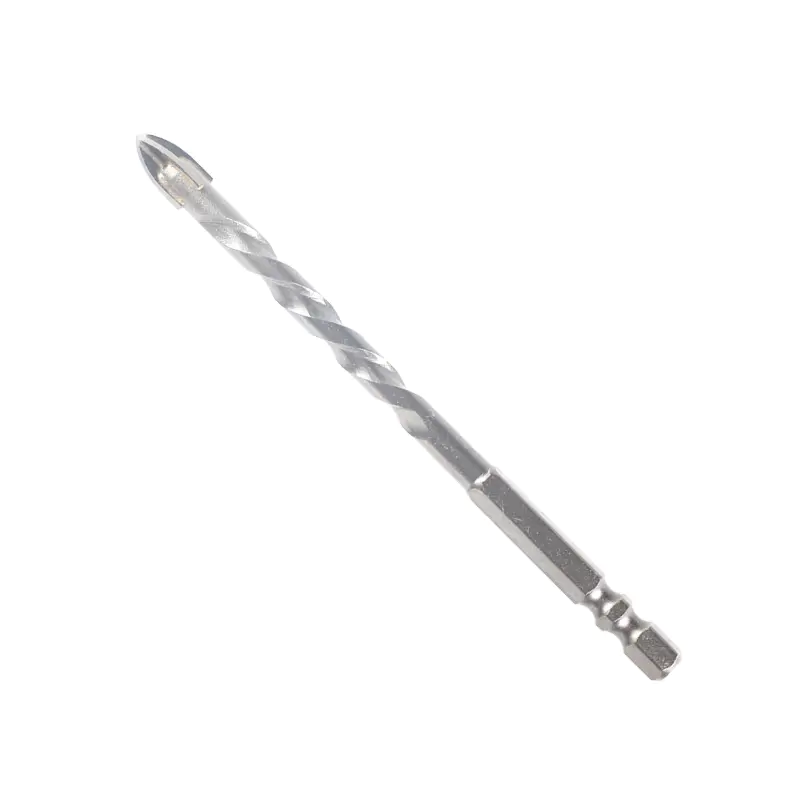2025-11-21
When evaluating whether a Glass Drill Bit can maintain its sharpness and resist overheating during prolonged operation, it is necessary to examine its design fundamentals, material composition, and usage conditions. This type of drill bit is engineered specifically for brittle surfaces such as glass, ceramics, and tiles, meaning its reliability is closely tied to precision cutting edges and heat dissipation mechanisms. Users commonly worry that extended drilling sessions might result in dulling or excessive heat buildup, potentially compromising efficiency or damaging the workpiece. Fortunately, modern tool engineering and responsible usage practices significantly reduce these risks, allowing these bits to deliver dependable performance in continuous tasks.

Manufacturers typically produce these tools with diamond-coated or tungsten carbide tips, materials selected for their hardness and abrasion resistance. Such compositions allow the cutting edge to grind through brittle surfaces effectively rather than applying aggressive force. However, even a high-quality tip will gradually lose sharpness if subjected to continuous heavy-duty use without cooling or proper drilling technique. The cutting grains can microscopically chip away or polish smooth, decreasing effectiveness. In this regard, longevity depends not only on the manufacturing quality but also on operator behavior, drilling speed, and the hardness of the target material.
Overheating is one of the primary reasons a precision bit may degrade faster than expected. When friction builds during drilling, especially on hard glass surfaces, heat rapidly accumulates along the bit’s cutting edge and shaft. Excessive temperature can weaken bonding agents in diamond-coated bits or soften carbide surfaces, causing reduced sharpness. During extended work sessions, noticeable effects may include slower cutting, chip formation around the hole, or vibration due to tip wear. In severe cases, heat accumulation may transfer to the glass, causing cracks or thermal stress fractures.
To avoid such complications, proper cooling is essential. Many experienced users continuously apply water as a coolant and lubricant, preventing heat concentration and reducing friction. Low rotational speeds further support safe drilling, as high-speed dry cutting accelerates thermal buildup. When combined with periodic pauses to let the tool rest, these practices extend operational lifespan and help maintain sharp cutting performance. Therefore, while overheating is possible in extended operation, it is largely avoidable with correct technique.
Modern specialized drill bits incorporate design enhancements aimed at reducing wear and heat-related damage. Diamond grit distribution has been optimized to ensure consistent abrasion throughout the tool tip’s lifespan, and reinforced bonding techniques maintain grit adhesion even during extended use. Some bits include flute designs or multi-layer coatings that promote heat dissipation and enhance surface durability. These engineering improvements contribute to improved resilience across long-duration drilling tasks, enabling sustained performance without dramatically accelerated wear.
Nevertheless, users must still understand that no tool can indefinitely resist abrasion or thermal effects. Regular maintenance, such as cleaning the bit tip after drilling and avoiding excessive pressure, plays a key role in prolonging service life. If a bit starts to lose cutting efficiency, refreshing the tip using a dressing stone or switching to a new bit may be necessary. This ensures consistent hole quality and prevents surface damage on delicate materials.
Whether a specialized bit becomes dull or overheats during long-term use depends on two key factors: the quality of manufacturing and the drilling technique applied by the user. High-grade tools can withstand extended operation without quickly degrading, especially when used with coolant, low rotational speed, and steady pressure. While dulling and overheating are potential risks, they are neither immediate nor unavoidable. With thoughtful handling and regular cooling, users can expect durable, high-performance operation that maintains precision and reliability even during demanding tasks.